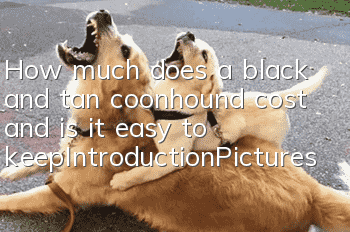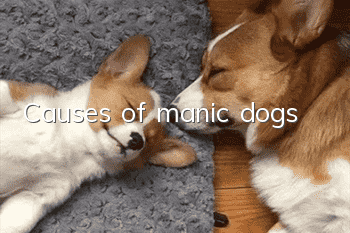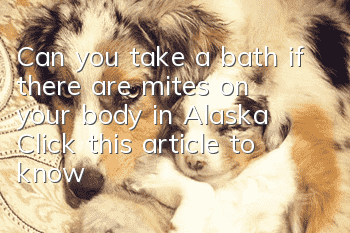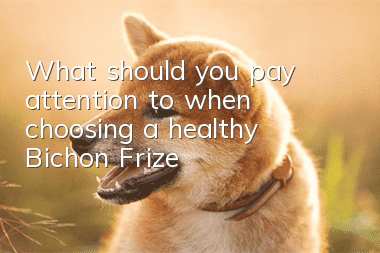How much does a black and tan coonhound cost and is it easy to keep_Introduction|Pictures

The Black and Tan Coonhound is a cross between a bloodhound and a foxhound and is used for hunting bears, deer, opossums and mountain lions in difficult terrain. It can withstand harsh winter cold and summer heat. Although usually mild-tempered, it becomes a tenacious stalker when it smells prey. Although the black and tan coonhound is not particularly fast on its feet, it can track with great skill and decisiveness. In fact, it hunts entirely by scent, in the manner of a bloodhound, stalking its prey with its nose to the ground and barking or making sounds when its prey is driven up a tree. Although this hound was bred specifically to hunt raccoons, it also does an excellent job hunting deer, cougars, bears, and possibly other larger game animals.
1. Introduction to black and brown coonhound
They are also called "tree hunting" dogs because they often chase raccoons up trees. Hunters identify and identify them by their different barks. Relying entirely on the sense of smell to perform its tasks, a very powerful, rhythmic pace gives it great speed. It appeared in the 18th century and was recognized in 1900. It was the first recognized breed of coonhound. The black and tan coonhound is actually an old breed. It is most likely derived from the famous English Talbottie hound during the reign of William I, the monarch of Normandy in the 11th century; later, it inherited the bloodhound and fox hunting through Britain's own Virginia foxhound. The dog's ancestry is often referred to as the "black and tan coonhound."
2. Characteristics of black and brown coonhound
Body size: The height of male dogs is 63.5-68.6 cm; the height of female dogs is 58.4-63.5 cm. Oversize dogs should not be considered a fault when the overall integrity and proportion are good. The height should be proportional to the overall structure so that the dog's legs appear neither too long nor too close to the ground.
Head: The expression is alert, friendly and eager. The skin has no wrinkles. The nostrils are flared and usually black. The upper lip is droopy, giving it a typical terrier appearance. Eyes range in color from hazel to tawny, are almost round and not deeply sunken. The ears are set low and well back, and they hang gracefully, giving the dog a majestic appearance. The teeth form a perfect scissors bite.
Body: The neck is muscular, sloping, and of moderate length. Avoid excessive dewlaps on the skin. The back is flat, powerful and strong. This dog has full, rounded and very elastic ribs that avoid flattening of the sides. The chest reaches at least the elbows. The tail is powerful, with its base slightly below the level of the topline, extending freely and approximately at right angles to the back when active.
Coat: The coat of the dark brown Coonhound is short, dense and jet black with tan markings above the eyes, sides of the muzzle, chest, legs and buttocks, and black pencil markings on the toes.
Personality: Peaceful, friendly and kind. doIt is a hound that works by its sense of smell and can also work closely with other hounds. Some dogs may be somewhat reticent, but are never shy or aggressive. Aggression towards people or other animals is least desirable.
Gait: The gait of the Black and Tan Coonhound is easy and graceful, sufficient to reach the front and drive behind. Viewed from the front, the front legs are spaced evenly apart from the width of the body and move forward in an effortless manner, never crossing. Viewed from the rear, the hock joints are in line with the front legs, and the stride is neither too wide nor too tight. As the sprint speed increases, the feet converge towards the center line, balanced and sustained.
3. Black and brown coonhound training
Sitting posture training
After giving the sit command "sit", lift the dog leash with your hands, force the dog to land on its butt, sit up, and maintain this position. Observe the dog's reaction. If it shows signs of standing up, you can repeat the command again. When the dog can sit still for a while, give it a little food reward.
Lying posture training
First, order the dog to sit down, then hold the dog’s favorite food in one hand and the dog leash in the other. In front of the dog, slowly place the food on the ground from high to low. The dog will lie on the ground following the food in the owner's hand, otherwise it will not be able to eat the food. This training can be carried out several times, and this method should be used every time the dog starts to eat.
Lying posture training
First, let the dog lie down, then hold down one of the dog's front feet, let the food shake in front of the dog, and then put it next to the other foot. The dog will lie down and try to eat the food. At this time, the owner should Let the dog eat the food and repeat this step. You can also choose to do it when the dog starts eating.
Handshake training
The owner squats down, and the puppy squats down as well. Then the owner taps one of the dog's front legs with his hand, and the dog will instinctively lift that leg. At this time, the owner should quickly grab the raised leg and issue a handshake command at the same time. Repeat this step. When the dog can consciously lift the leg after hearing the command, it can be rewarded with some food.
4. How to raise black and brown coonhounds
Early stage of feeding: Give it plenty of food, but don’t let it eat until it’s feeding time. Wash utensils every day and continue to provide them with enough clean water. When feeding smaller puppies or toy dogs, the food must be mixed with water to soften before feeding. If you are feeding professional dry dog food or canned dog food, please follow the instructions on the product packaging.
Feeding taboos:
(1) Do not give black and tan coonhound puppies the opportunity to swallow chicken bones, ribs or fish bones, because they will stay in the throat and then break into pieces. If they are not left in the throat, they will slip into the body and pierce the stomach wall. and intestines.
(2) Do not let black and tan coonhound puppies eat people's leftovers, because dogs have different nutritional needs from humans. If you use human recipes to prepare dog food, it will not only be time-consuming and troublesome, but also difficult for your dog to eat. to complete and balanced nutrition.
(3) Do not give snacks to the black and tan coonhound puppy between each meal. If it obeys other training, you can give it a few snacks to show encouragement.
(4) Remember not to let black and tan coonhound puppies eat at the table, because this will develop a bad habit of begging. Specific foods can only be fed at designated times and places. Food can only be placed in the puppy's bowl and cannot be fed with other food utensils. In addition to this, don’t forget to provide your dog with plenty of clean water.
5. How much does a black and tan coonhound cost?
There are two types of black and tan coonhounds: competition and field. The price of the competition type is a little higher than that of the outdoor type, and the general price is around 1,500-8,000 yuan.
Guess you like it
Skye Terrier Bloodhound Basset Hound Shar-Pei Sipke
- Why do dogs get depression?
- What should I do if my puppy has heavy dental calculus?
- Tips for cleaning your dog’s ears
- What happens when the color of a golden retriever's foot pads changes? What's the reason for the discoloration of the golden retriever's foot pads!
- Signs of aflatoxin poisoning in dogs
- How to relieve arthritis pain in dogs?
- WOWO amino sugar protects the health of dogs' joints and releases the flexibility and vitality they were born with.
- Why does a golden retriever have tear stains?
- How many egg yolks can a dog eat in a day?
- Basic principles of dog feeding



